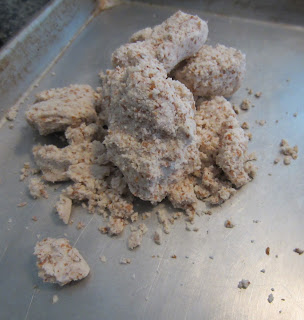Shay is a fellow food enthusiast who does a great job taking care of her family. When she's not in the kitchen whipping up enticing/healthy food she enjoys quilting, making crafts, reading, and spending quality time with her beautiful family. Her adorable son Dieter has food allergies and she does a wonderful job sharing what has/hasn't worked when it comes to keeping him healthy and happy. Many parents struggle with their kids food allergies and she does a great job at keeping her family balanced and healthy. Check out her blog Raising Dieter for more allergy tips!

Here is her story:
"I noticed Dieter's eczema when he was five months old. He was also vomiting more frequently around that time. I took him to a chiropractor that specialized in the NAET treatments. He tested allergic to corn, soy, dairy, gluten, and refined sugars. I started the treatments and I ended up going a couple of times a week for 7 months! During that time his allergies kept getting worse and worse. Any new thing he came in contact with he was allergic to: rubber, plastic, latex, bananas, apples, tomatoes, polyester, olive oil, pineapple, the list goes on... His skin looked terrible and he was still vomiting. I finally stopped the treatments and took him off of everything. We (I was still breast feeding at the time) had a pretty simple diet. Our main food was rice, beans, and potatoes. Most fruits and vegetables were okay. Dieter was on that diet for a year and still couldn't have most foods. Something had to change! His skin was still breaking out and he couldn't hardly eat anything! One night, I happened to find a blog that talked about the GAPS diet. I ordered the book and started Dieter on the diet the week after the book arrived. My whole family needs to start on the diet.
I have learned a lot since my son was allergic to everything. I have bought grains that I never new existed: quinoa, millet, amaranth. His allergies today are soy, corn, dairy, gluten, refined sugars, and tree nuts. Before finding the GAPS diet, I was compiling a binder with good wholesome recipes. Now with the GAPS diet I have more to add! My family is going back to the basics: homemade, whole foods."











